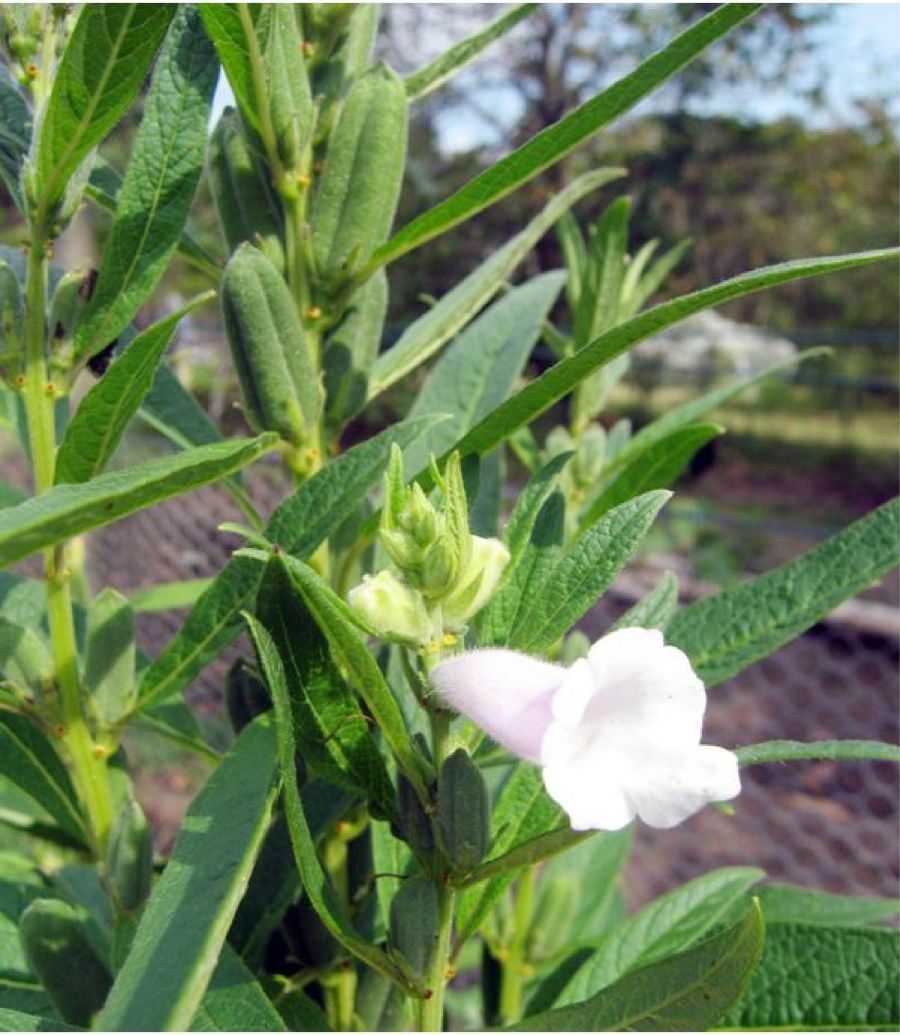Package and Practices of Sesame (Sesamum Indicum L.)

T. Jamir, LK Baishya, N Walling, LJ Bordoloi & DJ Rajkhowa
Introduction
Sesame (Sesamum indicum L.) is the oldest indigenous oilseed crop, with longest history of cultivation in India. Sesame or gingelli is commonly known as til (Hindi, Punjabi, Assamese, Bengali,Marathi), tal (Gujarati), nuvvulu, manchi nuvvulu (Telugu), ellu (Tamil, Malayalam, Kannada),tila/pitratarpana (Sanskrit) and rasi (Odia) in different parts of India. Sesame Seed (contain 50% oil,25% protein and 15% carbohydrate) is used in baking, candy making and other food industries. It is an integral part of rituals, religion and culture. The oil is used in cooking, salad oils and margarine (contains about 40% oleic and 40% linoleic acid). Sesame oil and foods fried in sesame oil have a long shelf life because the oil contains an antioxidant called sesamol. The oil can be used in the manufacture of soaps, paints, perfumes, pharmaceuticals and insecticides. Sesame meal is an excellent high quality protein (40%) feed for poultry and livestock. Sesame seeds are store house of energy and very rich in vitamins E, A, B Complex and minerals viz., calcium, phosphorus, iron, copper, magnesium, zinc and potassium. It is a best substitute for mother’s milk especially incase of milk allergies. Sesame seed contains extraordinary quantities of methionine, tryptophan, amino acids with innumerable benefits.
Climatic requirement
Sesame is grown in almost all the states in large or small areas. It can be cultivated up to the latitude of 1600m (India 1200 m). Sesame plant needs fairly high temperature during its life cycle. Normally the optimum temperature required during its life cycle is between 25-350C. If the temperature is more than 400C with hot winds the oil content reduces. If the temperature goes beyond 450C or less than 150C there is a severe reduction in yield. The pollen becomes sterile at aberrant temperatures. The crop is very sensitive to excessive water in the field. Stagnation of water for long period in the standing crop will completely affect the crop. The well distributed rain during kharif season results in the good crop. During the last decade drastic changes in the climate have been experienced in the country. Aberrations in weather conditions, irregular and unevenly distributed rainfall have adverse effect on sesame yield. The abiotic stresses consequently will result in the biotic stresses which are difficult to manage. In order to tackle these problems one should evolve appropriate varieties to tolerate abrasive weather conditions. Photo and thermo insensitive varieties, responsive to fertilizer application depending on moisture and resistant varieties to insect pests and diseases are the need of the hour.
Land preparation
One or two ploughings followed by harrowing are recommended for pulverization and fine tilth required for good germination and plant stand. Keep the field weed free and perfectly levelled to avoid water logging to which sesame is highly sensitive.
Seed rate
A seed rate of 5 kg/ha is needed to achieve the required plant stand. Wherever seed drill is used, the seed rate may be reduced to 2.5 to 3 kg/ha from 5 kg/ha. For easy interculture and to realize higher yield adopt line sowing.
Sowing method
In order to facilitate easy seeding and even distribution increase the bulk by mixing the seed with either sand or dry soil or well sieved farmyard manure in 1:20 ratio. Use seed drill or deshi plough with suitable attachment for line sowing. The optimum depth for seed placement is 2.5 cm. Avoid deep seeding as it adversely affects germination and plant stand.
Growing season
Sesame is grown in all the crop growing seasons viz, kharif, late kharif, rabi and summer. It is grown in more than one season in some part and in different seasons in other parts of the country.
Sesame growing seasons in India

Normally, the crop is grown in plains but it also comes up successfully up to 1200 m above mean sea level. For maximum yield, sesame requires fairly high temperatures (25-350 C) and evenly distributed rainfall during its growth period.
Soils
Sesame can be grown on a wide range of soils, however well drained light to medium textured soils are preferred. It does best on sandy loams with adequate moisture. The optimum pH range is 5.5 to 8.0. Acidic or alkaline soils are not suitable.
Cropping system and cropping sequence in sesamum

Seed Treatment
For the prevention of seed borne diseases, use treated seed with Thiram 2 g/kg + Carbendazim 1 g/kg or Trichoderma viride 5 g/kg seed. Wherever bacterial leaf spot disease is a problem, soak the seed for 30 minutes in 0.025% solution of Agrimycin-100 prior to seeding.
Manures and Fertilizers
For improving soil physical conditions and to obtain higher yield, apply about 5 tonnes/ha of well decomposed farm yard manure before the last ploughing and incorporate it thoroughly in to the soil. Sesame responds well to inorganic fertilizers. The dose of fertilizers would however, vary depending on the variety, season, soil fertility status, previous crop, rainfall and soil moisture.
Weeding and Interculture
The critical crop weed competition period in sesame is up to 40 DAS. The crop is very sensitive to weed competition during the first 20-25 days. Two weedings, one after 15-20 days of sowing and other at 30-35 days after sowing are required to keep the field weed free and for moisture and nutrients available to the crop. For interculture, use hand hoes or bullock drawn blade harrow. Preplant incorporation of 1 kg a.i./ha fluchloralin or pre emergence application of 1 kg a.i./ ha Pendimethalin effectively check weed growth. One hand weeding and hoeing at 30 days after sowing may be followed.
Irrigation
Except, when raised during rabi-summer seasons, sesame rarely receives any irrigation. Nevertheless, protective irrigation will greatly benefit the kharif crop also whenever there are prolonged dry spells. For rabi-summer crop give the irrigation, immediately after sowing to improve germination and plant establishment, if soil moisture conditions warrant. The subsequent irrigations may be given at an interval of 12-15 days depending on the soil type, weather conditions and season. For good seed filling and yield, irrigations at flower initiation and capsule formation are essential.
Suitable varieties grown in Nagaland

Harvesting and threshing
The best time of harvesting is when the leaves turn yellow and start drooping while the bottom capsules are lemon yellow. Do not postpone harvesting and allow the crop to dry completely in the field because such practice leads to losses due to shattering. Usually the crop is threshed by gentle beating of well dried plants with sticks.
Economics of cultivation
With the adoption of improved technology, on an average, the seed yield of 508 kg/ha, gross returns of Rs. 35245/ha, additional net return of Rs. 8458 /ha and the benefit cost ratio of 2.11 can be obtained.





